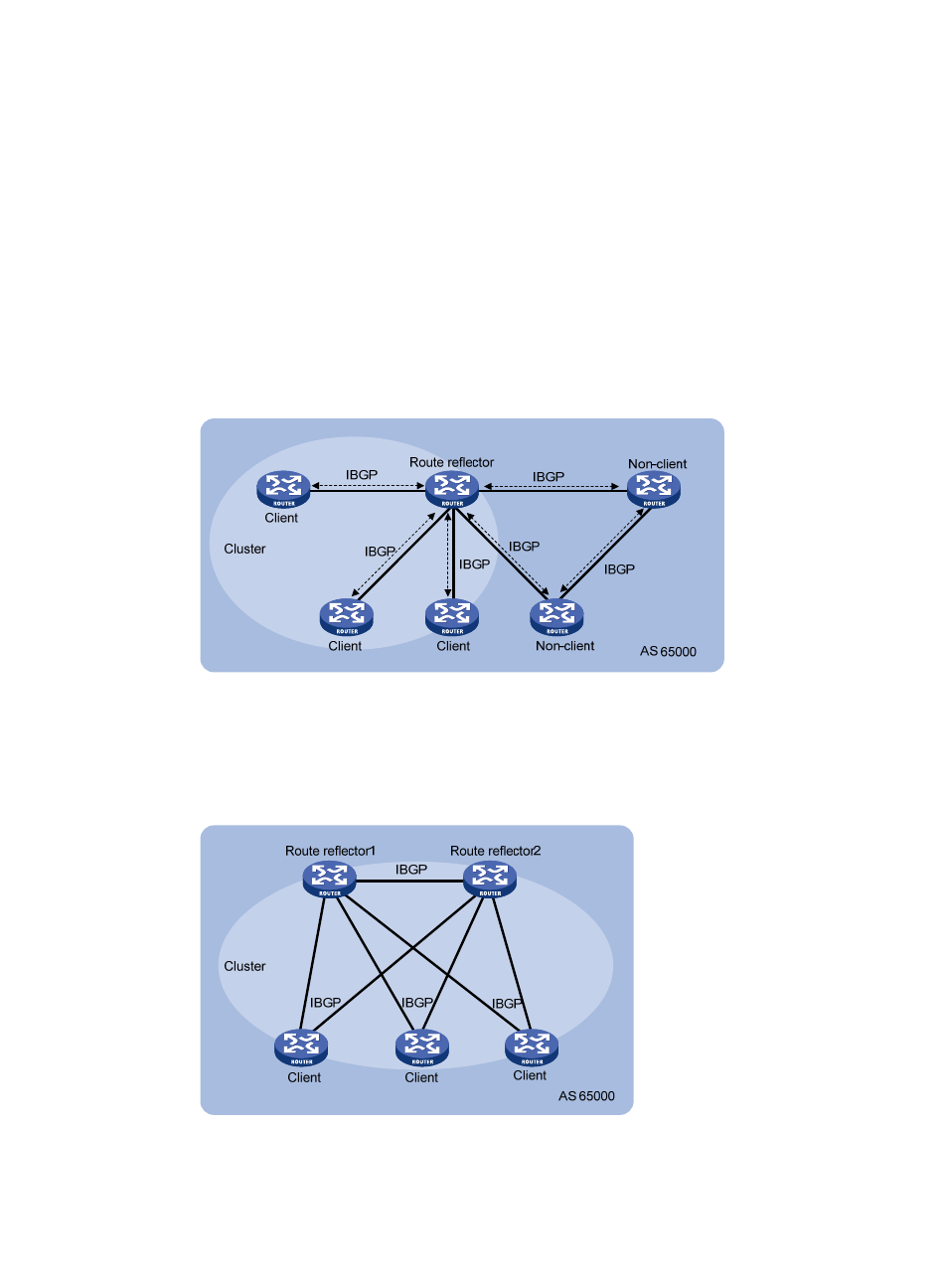H3C Technologies H3C S5560 Series Switches User Manual
Page 212

196
You can apply a community list or an extended community list to a routing policy for route control.
For more information, see "
•
Route reflector
IBGP peers must be fully meshed to maintain connectivity. If n routers exist in an AS, the number of
IBGP connections is n(n-1)/2. If a large number of IBGP peers exist, large amounts of network and
CPU resources are consumed to maintain sessions.
Using route reflectors can solve this issue. In an AS, a router acts as a route reflector, and other
routers act as clients connecting to the route reflector. The route reflector forwards routing
information received from a client to other clients. In this way, all clients can receive routing
information from one another without establishing BGP sessions.
A router that is neither a route reflector nor a client is a non-client, which, as shown in
must establish BGP sessions to the route reflector and other non-clients.
Figure 54 Network diagram for a route reflector
The route reflector and clients form a cluster. Typically a cluster has one route reflector. The ID of
the route reflector is the Cluster_ID. You can configure more than one route reflector in a cluster to
improve availability, as shown in
. The configured route reflectors must have the same
Cluster_ID to avoid routing loops.
Figure 55 Network diagram for route reflectors